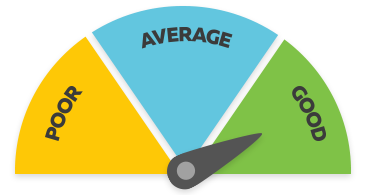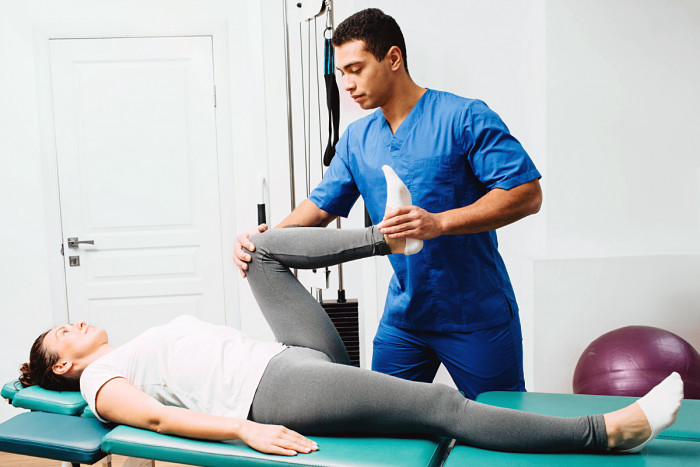Osteopath
Kaiwhakamaimoa Kōiwi
Osteopaths diagnose muscular and skeletal injuries and treat them using manual techniques such as stretching, massage and manipulation.
Pay
Osteopaths with less than five years' experience usually earn
$49K-$60K per year
Osteopaths with more than five years' experience usually earn
$60K-$100K per year
Source: careers.govt.nz research, 2021.
Job opportunities
Pay
Pay for osteopaths varies depending on experience and responsibilities.
- Osteopaths with less than five years' experience usually earn between $49,000 and $60,000 a year.
- Osteopaths
with more than five years' experience can earn from $60,000 to $100,000.
Source: careers.govt.nz research, 2021.
- PAYE.net.nz website – use this calculator to convert pay and salary information
- Employment New Zealand website - information about minimum wage rates
(This information is a guide only. Find out more about the sources of our pay information)
What you will do
Osteopaths may do some or all of the following:
- talk with patients about their problems, symptoms and general health
- carry out osteopathic examinations to decide what treatment is best
- treat patients using techniques such as stretching, massage, movement and manipulation
advise patients about condition management and injury prevention- give patients exercises to do
- carry out workplace assessments for patients who have Occupational Overuse Syndrome (OOS)
- refer patients to medical specialists for treatment or procedures such as x-rays or ultrasound scans.
Skills and knowledge
Osteopaths need to have:
- knowledge of the human body, particularly muscles, bones and joints
- the ability to accurately diagnose musculoskeletal conditions or injuries
- knowledge of osteopathic treatments and methods including manipulation and massage
- up-to-date knowledge of new research, treatments and practices
knowledge of different diseases, illnesses and injuries.
Working conditions
Osteopaths:
- usually work regular business hours but may also work evenings and weekends
- may work in private clinics or health centres.
What's the job really like?
Osteopath video
Annie Lavy talks about life as an osteopath – 2.22 mins
my name is Annie and I'm an osteopath.
An osteopath is working on improving the patient's health,
improving their pain, and is working on the entire body,
so not just on the part of the body that is giving pain. For example,
your pain can be in your shoulder.
Maybe the pain is there because you had an injury on your knee,
so your pelvis is not balanced and this creates some adaptation on the
back that are leading your shoulder not to work well.
So today we are here with a new patient.
I'm getting her to stand up because I want to check her posture if there is
something wrong with it, if there is some part that is not aligned.
Osteopaths work with people from all stages of their life.
We can treat newborns, children, teenagers, adult,
elderly people. Otherwise we can specialise in more specific like
sport, activities.
Now I'm just trying to figure out which part is giving pain. So I'm going to
press on the muscles to figure out which one is suffering.
I decided to become an osteopath because I was interested in medicine and
physiotherapy field, and what I learned about osteopathy,
I understood it was putting both together and I
love the type of osteopathic approach that is considering not just one part of
the body, but the body as a whole. To become an osteopath,
you have to go to a course.
You can have postgraduate courses in which you can specialise.
You can learn other type of approaches, other type of techniques.
Some of the subject that I found useful from high school were more into the
scientific field.
The most difficult thing about being an osteopath is you have to deal with
patients. They usually come to you because they are in pain,
so this is quite an emotional part of the job.
My favorite thing about my job is the fact that I can help people.
I can improve their lifestyle, I can help them feeling better.
This is quite rewarding.
Entry requirements
To become an osteopath you need to have the following qualifications:
- Bachelor of Musculoskeletal Health or Applied Science
- Postgraduate Diploma in Osteopathy
Osteopaths also need to be registered with the Osteopathic Council of New Zealand.
The Vulnerable Children Act 2014 means that if you have certain serious convictions, you can’t be employed in a role where you are responsible for, or work alone with, children.
Secondary education
A tertiary entrance qualification is required to enter further training. Useful subjects include biology, chemistry, health education, maths and physics.
Additional requirements for specialist roles:
To specialise in the following areas or scopes of practice, you need to have a specific qualification or meet criteria approved by the Osteopathic Council in:
- acupuncture
- child and adolescent health
- gerontology (health care of older people)
- pain management.
Personal requirements
Osteopaths need to be:
- patient and understanding
- dedicated and motivated
- good listeners and communicators
- good at problem solving
- able to make good judgements.
Useful experience
Useful experience for osteopaths includes:
- any work that involves knowledge of the human body and physiology
- any work in the health sector.
Physical requirements
Osteopaths need to be reasonably fit and healthy as they use physical methods such as massage and movement to treat patients.
Registration
Osteopaths need to be registered with the Osteopathic Council of New Zealand and have a current Annual Practising Certificate.
- Osteopathic Council of New Zealand website - information about Annual Practising Certificates
- Osteopathic Council of New Zealand website - information on osteopath registration
Find out more about training
Ara Institute of Canterbury
0800 242476 - info@ara.ac.nz - www.are.ac.nz
Osteopathic Council of New Zealand
(04) 474 0747 - registrar@osteopathiccouncil.org.nz - www.osteopathiccouncil.org.nz
Check out related courses
What are the chances of getting a job?
Strong demand for qualified osteopaths
Demand for osteopaths is expected to remain strong due to:
- the increasing popularity of alternative health therapies
- ACC are funding osteopathic treatments
- low numbers of new graduates
- the aging population means more people are using osteopathic services.
Osteopath appears on Immigration New Zealand's Green List. This means the Government is actively encouraging skilled osteopaths from overseas to work in New Zealand.
According to the Osteopathic Council of New Zealand, 557 registered osteopaths worked in New Zealand in 2020.
Plenty of jobs for new graduates
There are good job opportunities for new graduates as only 20 to 30 people graduate each year and become registered as osteopaths. New graduates usually work as an associate in an osteopathic clinic or natural health care clinic.
Self-employment common among osteopaths
Most osteopaths (over 80%) are self-employed and have private practices. Osteopaths may also be employed by:
- private osteopathic clinics
- public and private hospitals
- natural health care clinics
- education institutions as teachers or researchers.
Sources
- Accident Compensation Corporation (ACC) website, accessed March 2021, (www.acc.co.nz).
- Immigration New Zealand, Green List, April 2023, (www.immigration.govt.nz).
- Ministry of Health, 'COVID-19: Essential services in the health and disability system', 7 October 2020, (www.health.govt.nz).
- Osteopathic Council New Zealand website, 'Annual Report 2020,' accessed March 2021, (www.osteopathiccouncil.org.nz).
- Osteopaths New Zealand website, accessed March 2021, (www.osnz.org).
(This information is a guide only. Find out more about the sources of our job opportunities information)
Progression and specialisations
Osteopaths may progress to set up their own practice.
Osteopaths may specialise in:
- acupuncture
- child and adolescent health
- gerontology (health care of older people)
- pain management.
Last updated 28 March 2025


